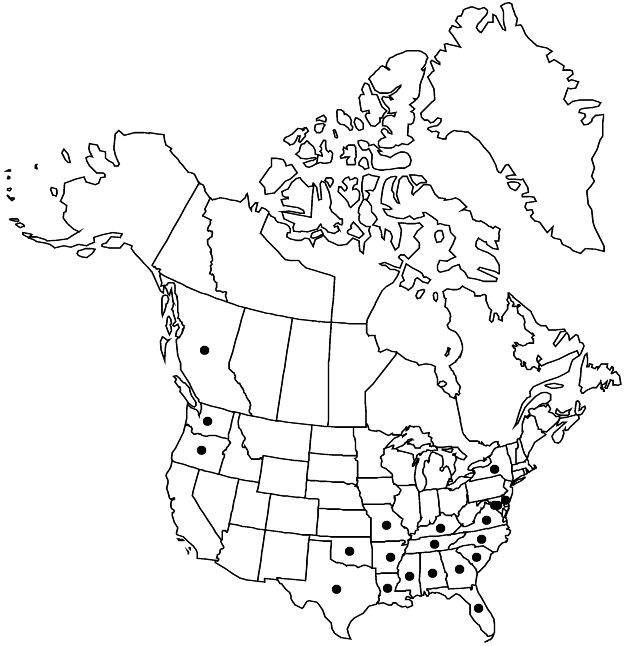Aphanes australis
in N. L. Britton et al., N. Amer. Fl. 22: 380. 1908.
Plants slender, appressed-hairy throughout, hairs usually less than 0.8 mm. Stems ascending or erect, simple or branched, (1–)3–10(–22) cm. Leaves 5–10 mm; stipules overlapping, (2.5–)4–6(–7) mm, divided ca. 1/2 their length, lobes (5–)7–10(–12), on distal nodes oblong, 2–4(–5) times as long as wide; petiole free from stipules in proximal leaves, adnate in distal ones; blade 5 mm, prominently divided into 3 segments, each (1–)2–3(–4)-lobed. Inflorescences opposing leaves, dense, flowers tending to remain hidden. Pedicels less than 1 mm. Flowers (0.8–)1.2–1.3(–1.4) × 0.7–0.8 mm, 1–1.5 mm in fruit; epicalyx bractlets 0–0.1 mm; hypanthium subglobose to ellipsoid, not contracted at apex, not distinctly 8-ribbed, hairy between ribs 2/3–3/4 of length, sometimes glabrescent; sepals connivent, 0.2 mm, long-ciliate. Fruits (0.9–)1.4–1.6(–1.7) mm. 2n = 16.
Phenology: Flowering Mar–May.
Habitat: Fields, sandy places
Elevation: 0–300 m
Distribution

B.C., Ala., Ark., Del., D.C., Fla., Ga., Ky., La., Md., Miss., Mo., N.Y., N.C., Okla., Oreg., S.C., Tenn., Tex., Va., Wash., Europe.
Discussion
Plants of Aphanes australis have commonly been misidentified as A. microcarpa (Boisser & Reuter) Rothmaler (or Alchemilla microcarpa Boisser & Reuter), an endemic to the western Mediterranean region. Plants native to other parts of Europe, but misidentified as A. microcarpa were described in 1984 as a new species, A. inexspectata, but this taxon had previously been described by Rydberg as A. australis from plants introduced to the eastern United States (P. Frost-Olsen 1998). Aphanes microcarpa is not present in North America.
Selected References
None.